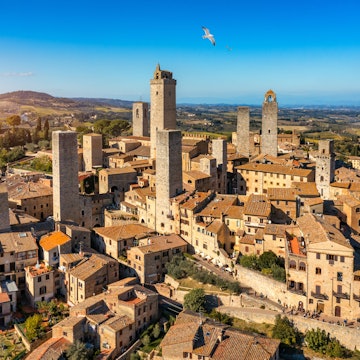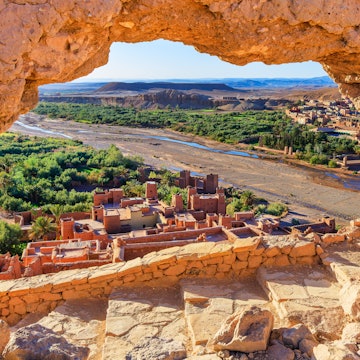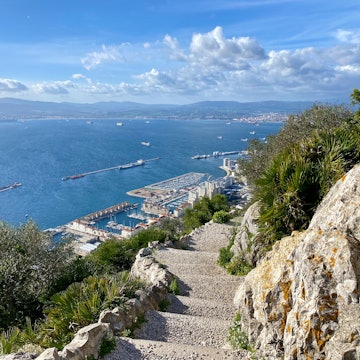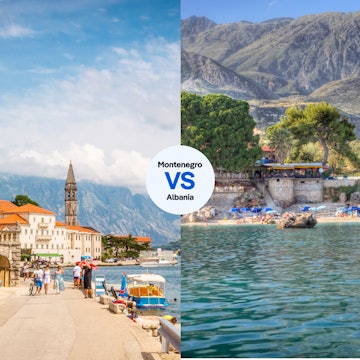

Setas de Sevilla in Seville, Spain. Anibal Trejo/Shutterstock
The beauty of traveling in Europe in autumn is the variety of experiences on offer. Hit the beach on sunny southern islands, hike through forests rich in autumnal tones or wander the streets of major cities – all without summer crowds. The fall also summons some of the continent’s greatest flavors, with harvest season delicacies showing up in markets and on menus, whether in rustic Italian trattorias or high-end Nordic restaurants. In short, you can’t go wrong.
Here are some of the best places to travel in Europe in the fall.
1. Seville, Spain
Best for a city break
Autumn? Pah! Seville hits temperatures in October that many European cities would be proud of in summertime – think highs of 26°C (79°F). Indeed, fall is ideal for sightseeing: the steaming heat has abated, but it’s still warm enough for T-shirt walks along the Guadalquivir River and evenings spent hopping between alfresco tapas bars. There’s much to see, starting with the Real Alcázar – the astonishing royal palace complex – with its Mudéjar architecture and glorious gardens. Then there’s the world’s largest Gothic cathedral with its commanding bell tower, the exquisitely tiled mansion of Casa de Pilatos and some excellent museums. Indeed, don’t miss the Museo del Baile Flamenco, where you can learn all about this passionate, flamboyant dance and catch a live performance.

2. Tenerife, Canary Islands, Spain
Best for sunshine
Tenerife has long welcomed sunseekers year-round – average daytime temperatures hover around 24°C (75°F) as late as November. Realistically, this is the only place in Europe where you can plan a beach holiday so late in the year. The big tourist resorts are in the south; better to head north instead, perhaps to the historic town of Puerto de la Cruz or the beaches around Los Gigantes and Puerto de Santiago in the west. If you can drag yourself off the beach, you’ll find the weather ideal for walking. At 3718m (12,199ft), Mt Teide is Spain’s highest peak and the world’s third-largest volcano; it’s a challenging five-hour hike (or a short cable-car ride) up to its snowy summit. But the island has a varied array of trails – including routes through the northwest pine forests, ridge walks among the laurels of the Anaga Mountains and the traverse of spectacular Masca Gorge – and excellent infrastructure for trekkers, with a good bus network and plentiful accommodation.
Planning tip: Microclimates can be dramatically different even in adjacent valleys. If you don’t like the weather in one spot, shift a few miles and you’ll likely find sunshine.

3. Dodecanese, Greece
Best for last-minute island-hopping
Early autumn is awesome in the Dodecanese: this is when you’ll find the southeasterly island group offering largely good weather, lower prices, warm seas and fewer visitors, as well as plenty of facilities that haven’t yet shut for winter (though that will start in November). The diverse Dodecanese is perfect for hopping, with good interisland ferry connections (including to nearby Türkiye) and a network of small boats serving smaller islands so you can mix up towns, beaches, historic sites and offbeat hangouts; this archipelago has both islands that see hordes of holidaymakers and specks that see barely a soul. Rhodes is the biggie, but interesting islands on which to linger include spectacular pebble-beached Symi (an easy trip from Rhodes); tiny, eco-pioneering Tilos, which strives to run on renewable energy; authentic Karpathos, which has managed to retain its strong traditional culture in the face of tourism (don’t miss Olymbos, the hilltop village that’s like a living folklore museum); and little-known Astypalea, with its quiet coves, castle-topped capital and vine-filled valleys.
Planning tip: Start in Rhodes, which has an airport. Alternatively, the ferry from Athens to Rhodes takes 16 to 18 hours. Hop northwards from Rhodes toward Patmos, the northernmost of the Dodecanese. Allow at least a week, two if you can.
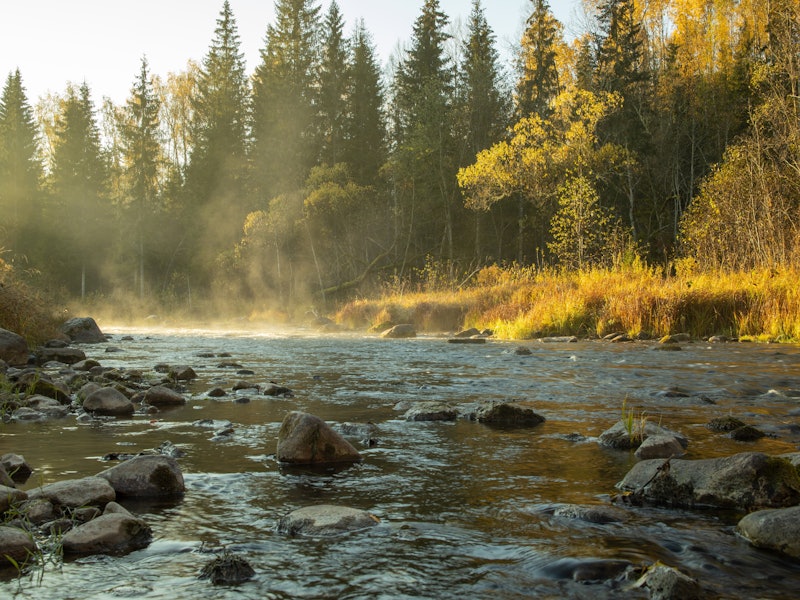
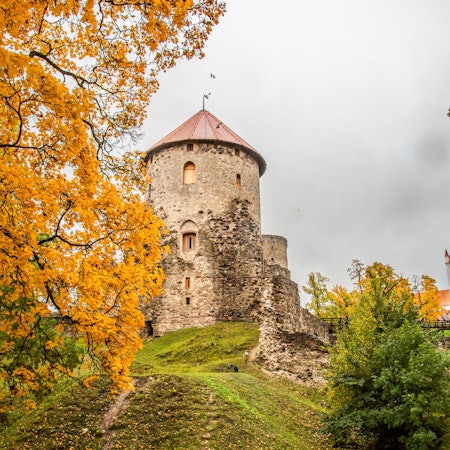
4. Latvia
Best for fall colors
October is a last-gasp chance to wander Latvia's wonderful wild places in warmish weather: the days are still a reasonable length, winter winds haven’t started to blow, and fall colors are at their best. Head to Gauja National Park, where you can admire medieval castles and misty waterways set against a sea of yellow-gold trees; there are hiking trails aplenty, from short leaf-peeping strolls to long routes along the Gauja River. Alternatively, head to Ķemeri National Park to strap on a pair of bog shoes and tramp through this unique environment; in autumn, the birding is brilliant. Both parks are within easy reach of the capital Rīga, whose handsome UNESCO-listed Old Town is worth exploring at any time. You can also taste the seasonal bounty of mushrooms, berries, fish and game available at local restaurants.

5. Umbria, Italy
Best for seasonal foods
Autumn fruitfulness doesn’t come more marvelously mellow than in Umbria. Tuscany’s lower-key neighbor is beautiful and bountiful in this season and the perfect place for a food-filled break. Its rolling hills and walled hill towns like Orvieto, Amelia and Narni are bathed in golden light and free of crowds. Its tables are overspilling with incredible local produce: lentils, beans and mushrooms, chestnuts and black truffles, bright saffron and olio novello (new oil) from the olive harvest. A range of cacciagione (game) dishes fill the menus, including cinghiale (wild boar) and fagiano (pheasant). And the grape harvest is in full swing, making this a fascinating time to follow the wine routes of the Strada del Sagrantino, visiting vineyards and medieval villages for tastings. And then there’s the chocolate. In November, Umbria’s provincial capital Perugia hosts Eurochocolate, a celebration of all things cocoa – not least Baci, the choc-hazelnut confection that hails from the city.
Planning tip: For a lovely rural base, stay in an agriturismo, self-catering accommodation within working farms.

6. Montenegro
Best for hiking
Don’t pack away the hiking boots just yet – thanks to their southerly latitude, the mountains of Montenegro remain open and awesome for ambling until November. And what mountains: the highest are within UNESCO-listed Durmitor National Park, a cluster of dark, serrated summits (of which 48 soar to over 2000m/6065ft) scattered with pine forest, lush meadows and glittering glacial lakes and home to all manner of wildlife, from birds to bears. There’s also good walking amid the peaks and primeval forests of Biogradska Gora National Park. Coastal high points, such as Mt Orjen and Mt Lovćen, offer sweeping views of the Adriatic – mix hikes here with dips in the azure sea, which remains beautifully inviting throughout October and is wonderfully crowd-free. A week’s walking could include an ascent of Rumija on the south coast; hiking in the Kučka Krajina range near capital Podgorica; admiring the fall colors around Mt Bjelasica in Biogradska Gora; and varied trekking in Durmitor, with the chance to stand atop Bobotov Kuk (2523m/8277ft), the country’s highest peak.

7. Copenhagen, Denmark
Best for cool dining options
Achingly cool Copenhagen is the epicenter of both Scandi design chic and the New Nordic food revolution – nowhere is food more creative, sustainable or seasonal than here, whether it be in Michelin-starred kitchens or farm-shop cafés, so dive into the autumnal bounty. As well as wandering the fall-fiery gardens at Rosenborg Slot, viewing Viking treasures at the Nationalmuseet and enjoying amazing art at nearby Louisiana, be sure to eat well. Start at Torvehallerne KBH, Copenhagen’s mouthwatering food market, which serves up everything from organic porridge to splendid smørrebrød (open sandwiches). Make reservations well in advance for hot culinary tickets such as Kadeau. Then take a foodie walking tour to find out where locals get their coffee and pastries and graze Nørrebro, the city’s most multicultural neighborhood, where hip boutiques sidle up next to craft-beer bars and cool cafés. Finish at Kødbyen, the city’s Meatpacking District, to drink like a Dane.

8. Scottish Highlands
Best for wildlife and autumnal scenery
A swirl of mist, moorland glowing in the dawn light and, perhaps, the anguished bellow of a stag angling for a fight – late-autumn mornings in the Scottish Highlands are an atmospheric affair. Indeed, travel there in the fall and you might catch the red deer rut, when the males joust with their impressive antlers to secure control over the females. Whether you explore by 4WD or on foot, the deer rut certainly adds an extra frisson to the already breathtaking lochs, glens and moors. And while it might be chilly, tourist season is over, making fall a good time for quieter sightseeing: Stirling, Eilean Donan Castle, Glen Coe, Fort William. Warm up with a wee dram, and tuck into fantastic seasonal food: Scottish oysters and lobster and plentiful pheasant, grouse and other game.
Planning tip: Many attractions close over winter. Some shut at the end of September, but many – such as Dunrobin Castle and Strathnaver Museum – are open until the end of October. Check before visiting.
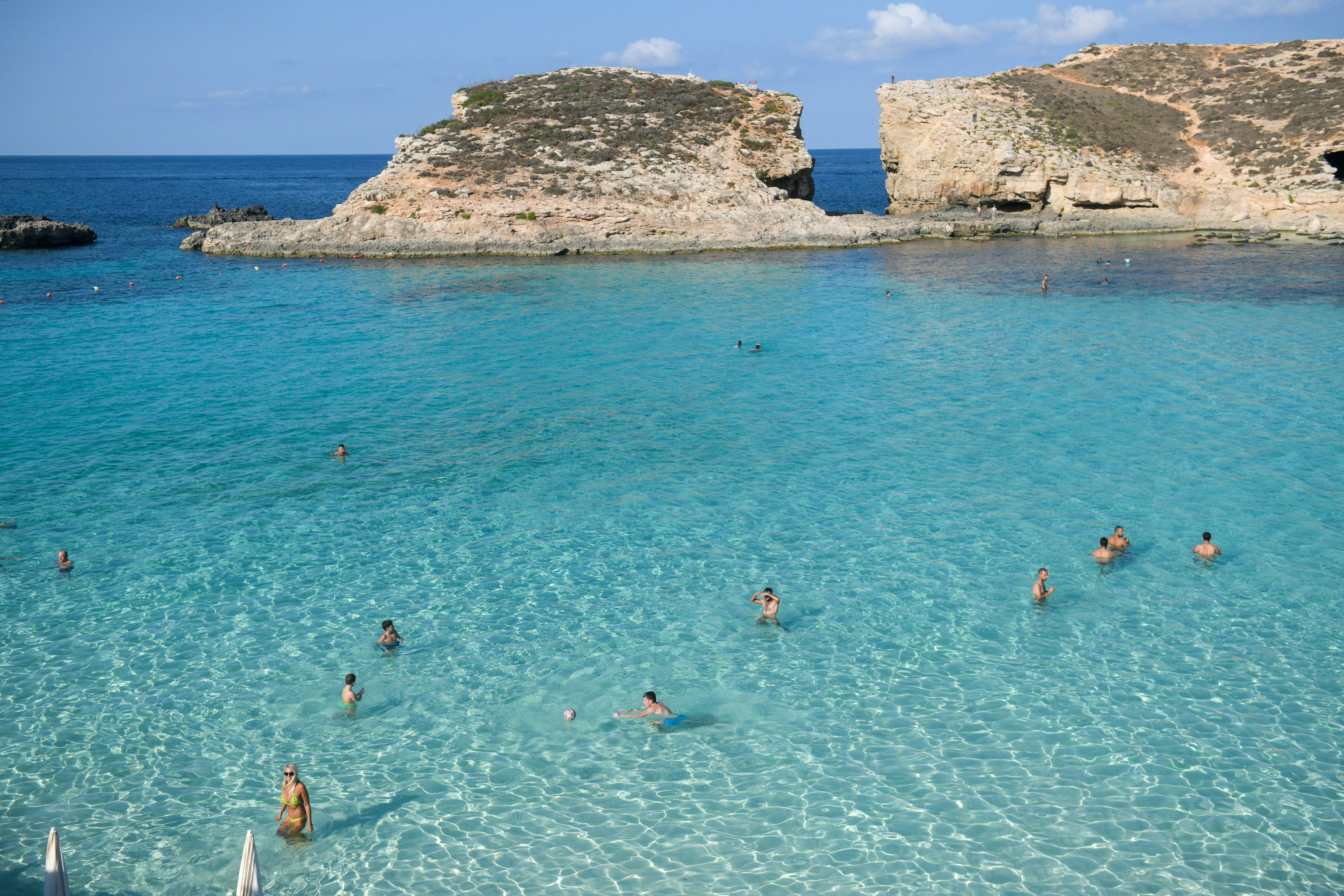
9. Malta
Best for a mix of island and city break
Tiny Malta has a lovely Mediterranean climate – it’s still toasty warm in November when much of Europe shivers. Indeed, with temperatures around 21°C (70°F) and seas holding onto the last of the summer’s heat, hitting the quiet beaches of sister-isles Gozo and Comino remains viable. Combine lazing around in the mild climes with some sightseeing – Malta’s small size means you can pack a lot in while also taking it easy. Spend time exploring UNESCO-listed capital Valletta and the walled former capital Mdina, known as the "Silent City," a fascinating collection of churches, museums and medieval alleyways. Visit the ancient underground burial chambers of the Hal Saflieni Hypogeum and the clifftop prehistoric temples of Ħaġar Qim and Mnajdra. Walk along the Dingli Cliffs, take a boat ride to the Blue Grotto and kick back on the beach at Golden Bay. Finish with a day trip to Comino’s Blue Lagoon, a preternaturally sapphire sea pool, overcrowded in summer but serene off season.
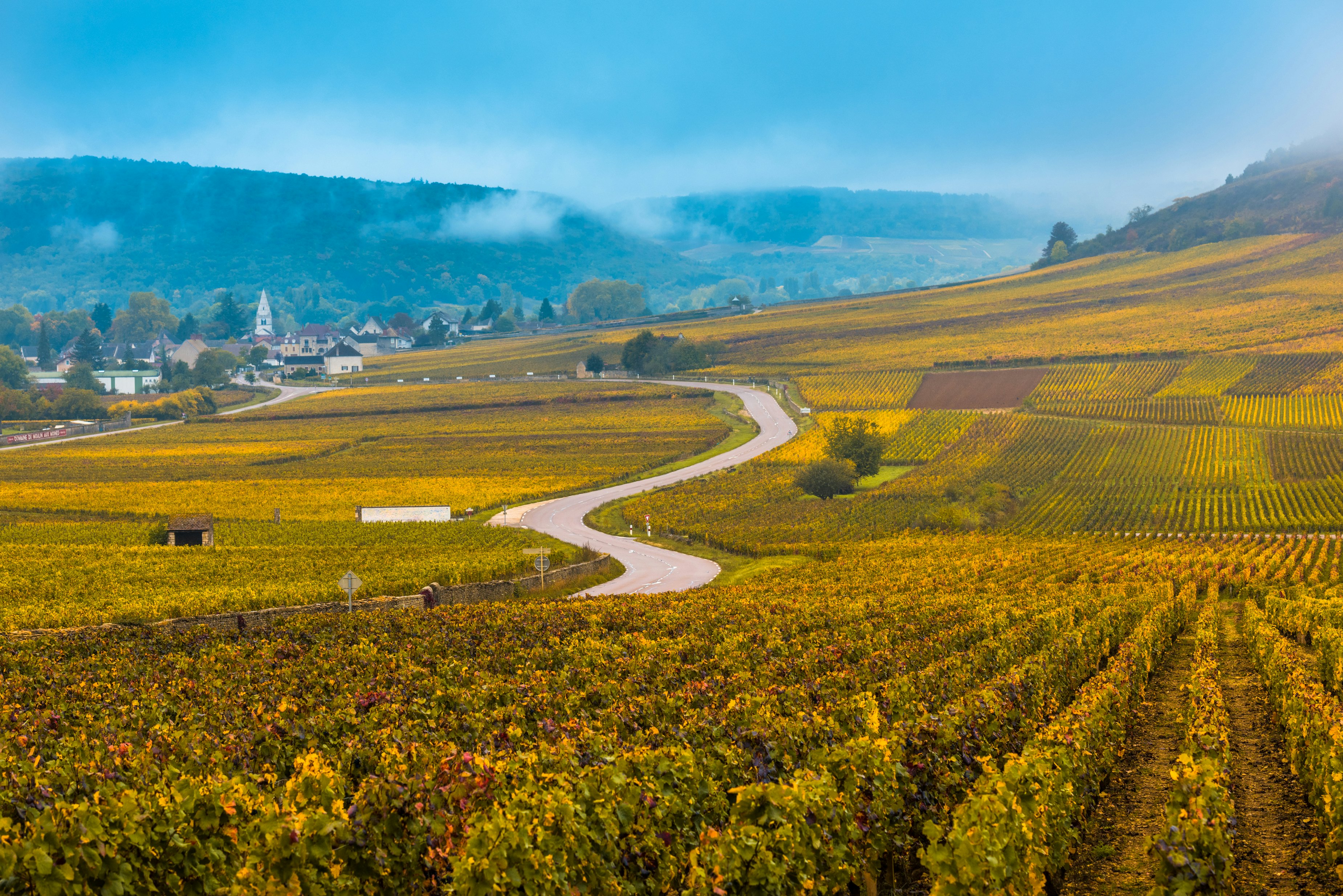
10. Burgundy, France
Best for wine lovers and cycling enthusiasts
Life’s pretty red and white in Burgundy – Pinot Noir and Chardonnay, to be precise, the two grape varieties that dominate France’s most venerable wine region, where viticultural heritage stretches back centuries to Roman occupation. Explore Burgundy’s rolling hills in vendange (grape harvest) season, when you’ll also enjoy ideal conditions for pedaling Le Tour de Bourgogne (Tour of Burgundy). This cycling circuit comprises some 800km (500 miles) of voies vertes (traffic-free greenways), canal towpaths and quiet country lanes linking the region’s most alluring attractions: Dijon’s medieval core, Beaune’s spectacular Hôtel-Dieu des Hospices, the ancient monastic complex of Abbaye de Fontenay, and the châteaux of Ancy-le-Franc and Tanlay. If the full circuit is too long, pick a subsection: perhaps part of the flat 240km (149-mile) leg along the Canal de Bourgogne or the 206km (128-mile) stretch of the Canal du Nivernais between Auxerre and Decize. For a wine-centric section, tackle the Voie des Vignes route between Beaune and Santenay (just 22km/14 miles) or simply pootle off among Burgundy’s vine-striped hillsides.







